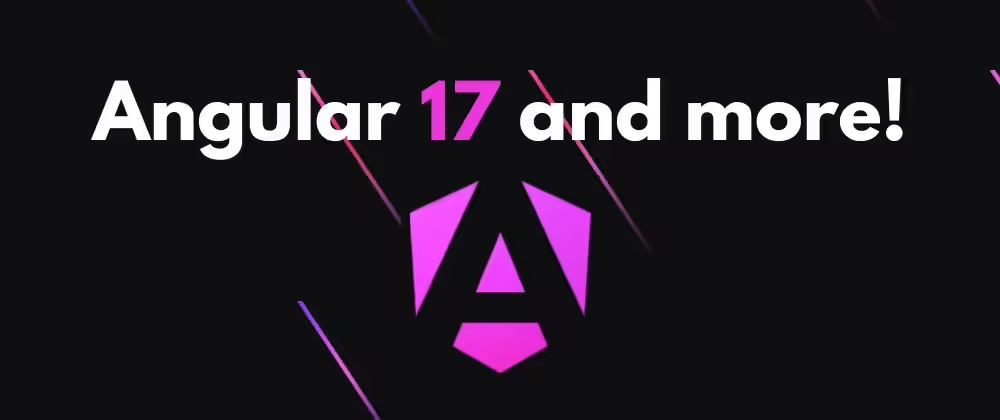Table of content
- Why you should care about web accessibility?
- Wrapping Up
Welcome to the world of web accessibility, where you hold the power to create inclusive websites that leave no user behind.
You're reading this article right now 'cause a year ago, my team had this goal to make the website we were working on double AA accessible and I'm gonna share my experiences with you.
This series contains a total of 5 posts, which topics are: 1. Why you should create accessible websites. 2. First, create accessible designs. 3. Key fundamentals on Web Accessibility (in progress) 4. Common accessibility challenges we faced (in progress) 5. Accessibility tools you must know (in progress)
So It's time to make the web accessible, one line of code at a time but first, let me give you four reasons that should be enough to convince you that learning and continuously developing accessible websites is the way to go.

Why you should care about web accessibility?
Inclusivity
Accessibility ensures that individuals with disabilities can access and use websites without barriers. By making your website accessible, you open doors to a wider audience and create an inclusive online environment where everyone can participate, engage, and benefit from the information and services you provide.
Different types of disabilities
- Visual disabilities: Users who are blind, have low vision, or experience color blindness.
Hearing disabilities: Users who are deaf or hard of hearing.
Motor disabilities: Users with motor impairments that affect their ability to use a mouse or keyboard effectively.
Cognitive disabilities: Users with cognitive impairments that affect their comprehension or ability to process information.
Autism spectrum disorder (ASD): Individuals with ASD may have unique sensory and communication needs.
Elderly users: Older adults may experience age-related disabilities such as decreased vision, hearing loss, or reduced motor skills.
Learning disabilities: Users with learning disabilities, such as dyslexia or attention deficit hyperactivity disorder (ADHD), may face challenges in processing and understanding information.
Speech impairments: Users with speech impairments may have difficulty speaking or communicating verbally.

Legal and Ethical Obligations
Many countries have laws and regulations that require websites to be accessible. If you're in the EU, take a moment to read up on the European Accessibility Act.
Sectors with legal requirements
Public Sector: government websites, portals, and online services provided by federal, state, or local governments.
Education: schools, colleges, and universities, often have legal obligations to ensure their websites and online learning platforms are accessible.
Healthcare: hospitals, clinics, and healthcare providers, may have legal obligations to ensure individuals with disabilities can access vital healthcare information, make appointments, access medical records, etc.
Banking and Financial Services: banks, financial institutions, and insurance companies are often required to be accessible so users can access banking services, manage accounts, make transactions, and access financial information independently.

Travel and Hospitality: airlines, hotels, and travel agencies, may have legal obligations to provide accessible booking systems, airline websites, hotel reservations, and travel information.
Entertainment and Media: movie theaters, streaming services, and news websites, often have legal requirements to make their digital content accessible. This includes providing closed captions, audio descriptions, and accessible video players to ensure individuals with disabilities can access and enjoy their content.
By ensuring accessibility compliance, you not only meet legal obligations but also demonstrate a commitment to ethical practices, promoting equal access and equal opportunities for all users.
Improved User Experience
Accessibility often goes hand in hand with a better user experience for all users, not just those with disabilities. Elements such as clear navigation, well-structured content, and sufficient color contrast benefit everyone by making websites easier to understand, navigate, and interact with.

An accessible website streamlines user interactions, making it easier and more efficient for users to find information, complete tasks, and achieve their goals. By removing barriers and providing accessible design elements, users can navigate through the website seamlessly, locate desired content quickly, and interact with features effectively.
A website that is accessible and usable generates higher user engagement and satisfaction. When users can easily access and interact with the content, they are more likely to stay on the site, explore further, and accomplish their objectives.

Search Engine Optimization (SEO)
Let's say you are not convinced yet about the efford that this requires and the benefits we all get. Well, here's one significant advantage for the website.
Accessibility features align with SEO best practices. For instance, providing alternative text for images helps search engines understand the content, improving your website's visibility and ranking in search results. Additionally, accessible websites tend to have better performance, mobile optimization, and clean code, which positively impact SEO efforts.
Some examples
Semantic HTML Markup
Using semantic HTML tags, such as heading tags (H1, H2, etc.) and proper markup for lists and tables, improves both web accessibility and SEO. Screen readers rely on these tags to navigate and understand page structure, while search engines interpret them to determine the importance and context of content.
Alternative Text for Images
Providing descriptive alternative text (alt text) for images not only makes them accessible to visually impaired users but also allows search engines to understand the image context. This can improve the website's visibility in image search results and contribute to overall SEO efforts.
Transcripts for Multimedia Content
Including transcripts for audio and video content not only makes the content accessible to users who are deaf or hard of hearing but also provides textual content that search engines can index. Transcripts can increase keyword relevance, improve search rankings, and attract more organic traffic to the website.
Responsive Design and Mobile Accessibility
Since mobile-friendliness is a crucial factor in search engine algorithms, an accessible and mobile-responsive website can positively impact SEO rankings.
Improved User Experience
Search engines value positive user experiences and tend to reward websites that prioritize accessibility and user-centric design. This can lead to increased user engagement, longer visit durations, and lower bounce rates, all of which can positively impact SEO performance.
Keyboard Accessibility
This also improves SEO because search engines assess the website's accessibility and usability, taking into account keyboard accessibility as a positive user experience signal.

Wrapping Up
I think these examples illustrate the importance of always prioritizing accessibility when creating your websites, so you enhance inclusivity, meet legal requirements, improve the user experience, and boost your online presence through better SEO.
Ultimately, it's a win-win situation for both users and website owners.
I hope you have learned something new. If you think this might help other people, please hit the like button so that others can read it. ❤️
If you have any thoughts or questions, feel free to leave a comment!








